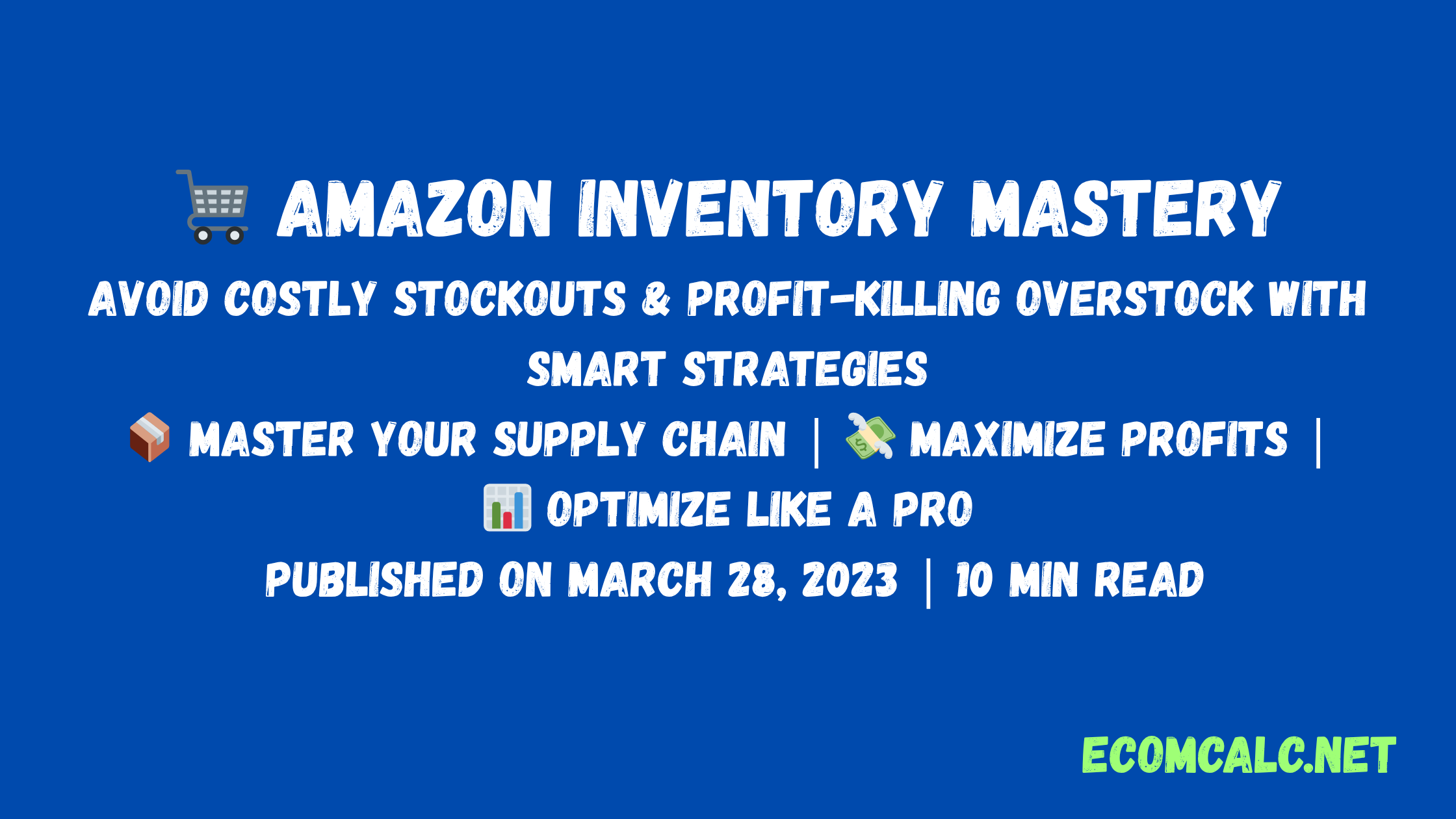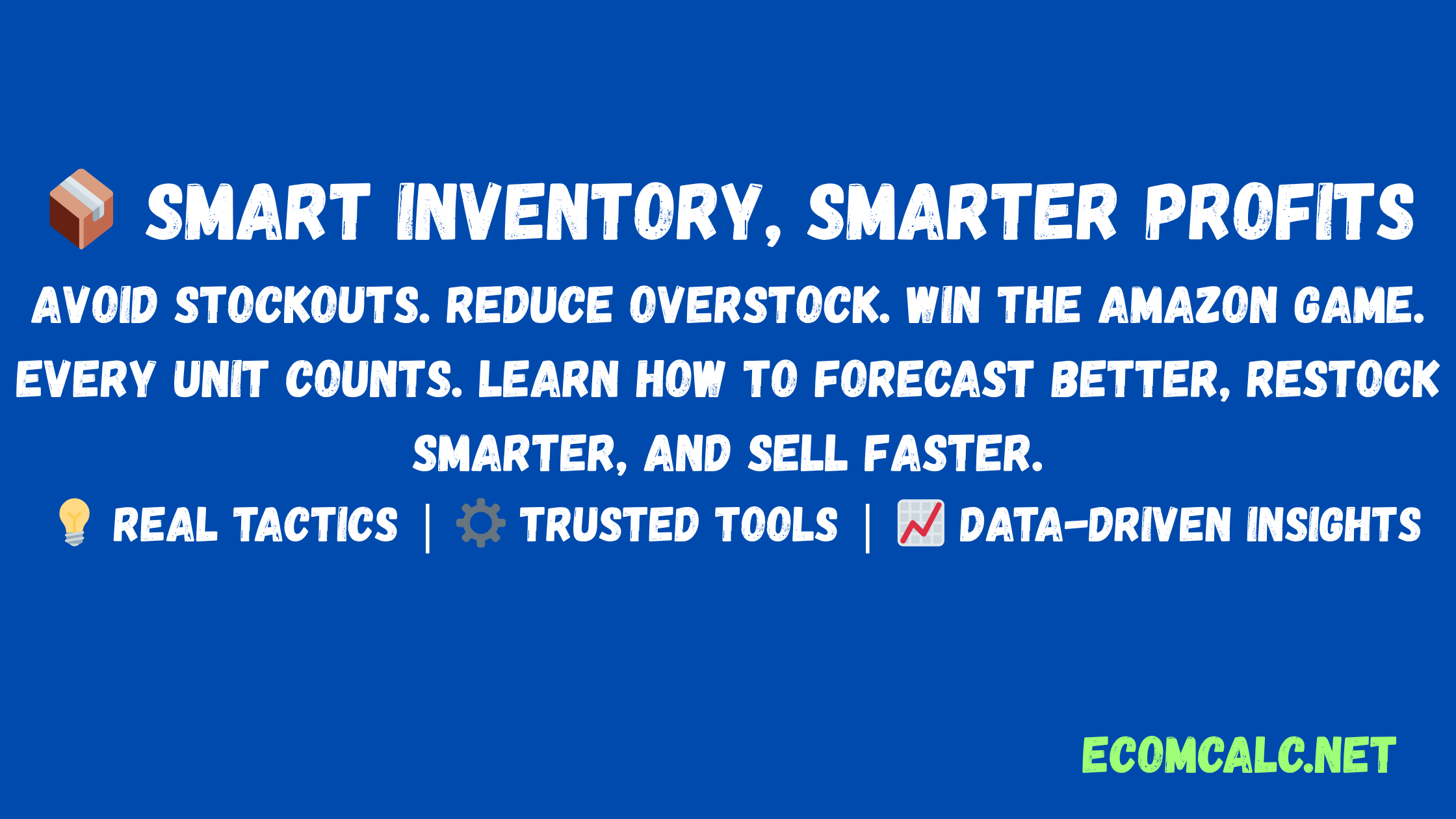Amazon Inventory Management: Avoiding Stockouts and Overstock
Published on March 28, 2023 | 10 min read
In the world of Amazon selling, inventory management isn’t just about having products on hand — it’s about striking the perfect balance between too little and too much. Mismanaging inventory can lead to lost sales, increased storage fees, and ultimately, a damaged seller reputation. Whether you're a seasoned FBA (Fulfilled by Amazon) seller or just starting your e-commerce journey, mastering the art of inventory management is a non-negotiable skill.
This in-depth guide will walk you through every aspect of Amazon inventory management, with a laser focus on avoiding two major pitfalls: stockouts and overstock. From forecasting demand to leveraging Amazon's tools, we’ll equip you with actionable strategies to optimize your inventory and boost profitability.

Why Amazon Inventory Management Matters
Inventory is the lifeline of your e-commerce business. If you run out of stock, your product listing may lose visibility, Buy Box ownership, and customer trust. On the flip side, excess inventory ties up your capital, incurs long-term storage fees, and increases your risk of obsolescence.
Proper inventory management impacts:
- Cash flow
- Sales ranking
- Fulfillment costs
- Customer satisfaction
- Your IPI (Inventory Performance Index) score
1. Forecasting Demand: The Foundation of Inventory Planning
Effective inventory planning begins with demand forecasting. You need to predict how much of each product will sell in a given timeframe.
How to Forecast Demand:
- Analyze Historical Sales
- Account for Seasonality
- Monitor Market Trends
- Factor in External Influences
Pro Tip: Use a rolling 30, 60, and 90-day average sales velocity to set accurate baseline forecasts.
2. Reorder Points: Knowing When to Restock
Setting accurate reorder points prevents you from running out of stock.
Reorder Point Formula:
Reorder Point = (Daily Sales Velocity × Lead Time) + Safety Stock
Example: If you sell 10 units/day, lead time is 15 days, and you keep 50 units safety stock:
(10 × 15) + 50 = 200 units

3. FBA Storage Limits: Understanding Amazon’s Rules
Amazon FBA sellers must operate within storage limits determined by the Inventory Performance Index (IPI).
Key IPI Factors:
- Excess inventory
- Sell-through rate
- Stranded inventory
- In-stock rate
How to Improve IPI:
- Remove excess inventory
- Fix stranded listings
- Boost sell-through with promotions
- Keep top-selling products in stock
4. Liquidating Slow Sellers: Cut Losses Smartly
Overstocking happens — when it does, act fast to avoid long-term storage fees.
Amazon Programs:
- FBA Liquidations
- Amazon Outlet
Other Strategies:
- Run Lightning Deals
- Bundle with fast-movers
- Sell on other platforms (eBay, Walmart)
- Donate to charity for tax benefits
5. Inventory Turnover Ratio: Keep Cash Flow Healthy
The inventory turnover ratio measures how quickly you sell and replenish inventory.
Formula:
Turnover Ratio = Cost of Goods Sold / Average Inventory Value
Aim for a turnover of 8–12 times per year.
Boost Turnover By:
- Focusing on top-performing SKUs
- Using pricing strategies
- Optimizing listings and PPC
6. Inventory Management Tools for Amazon Sellers
- RestockPro
- SoStocked
- Sellerboard
- InventoryLab
- Helium 10 – Inventory Protector
7. Using Amazon’s Inventory Tools Effectively
- Inventory Performance Dashboard
- Manage Inventory Health
- Restock Inventory Report
- FBA Inventory Age Report
- Fee Preview Report

8. Best Practices to Avoid Stockouts
- Set reorder alerts
- Monitor suppliers closely
- Use 3PL for buffer inventory
- Prioritize in-demand SKUs
9. Best Practices to Avoid Overstock
- Order in smaller batches
- Track sell-through weekly
- Test new SKUs before scaling
- Avoid overcommitting to low-performers
10. Advanced Tips: Scaling Your Inventory Strategy
- Segment SKUs by sales velocity
- Use ABC Analysis
- Build SOPs
- Cross-sell slow items
Final Thoughts
Inventory management is the engine behind every successful Amazon business. While stockouts cost you sales and ranking, overstock eats into your profits and storage space. The key is to walk the tightrope between the two by making data-driven decisions and embracing technology.
With the right strategy, tools, and mindset, you can build a resilient inventory system that fuels long-term growth. Don’t just manage inventory — master it.
Frequently Asked Questions (FAQs)
Q1: What is the ideal IPI score to avoid storage limits?
A: Aim for an IPI score above 400.
Q2: How often should I check my inventory levels?
A: At least weekly — or daily during peak season.
Q3: What’s the most common reason for overstock?
A: Overestimating demand or committing to large MOQs.
Q4: Can I sell overstocked items outside Amazon?
A: Yes. Try eBay, Walmart Marketplace, or Shopify.